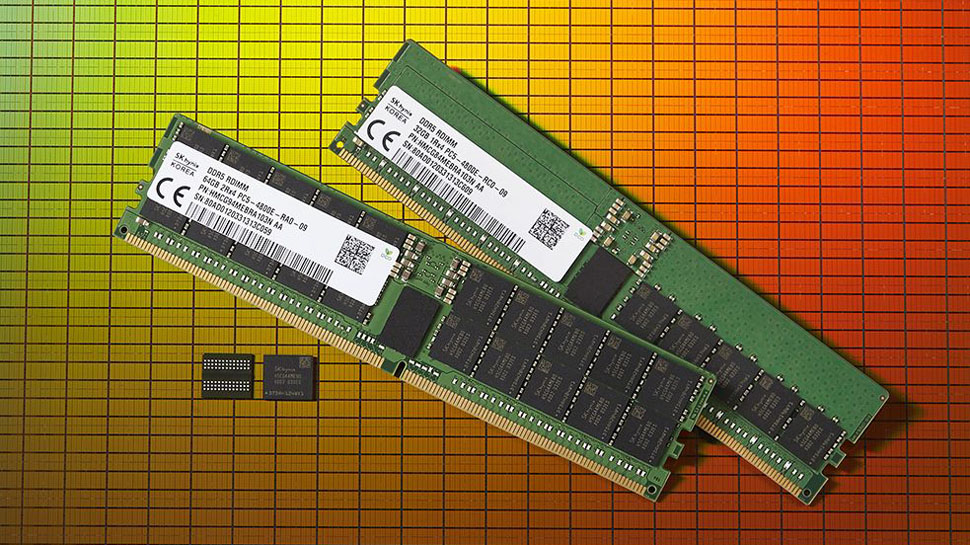Anybody care for some 256 GB DDR5 modules in the future?
DDR5 has been in the works for quite some time now. JEDEC published the preliminary spec sheet back in April, and in March Samsung announced its 2021 mass production plans. Now, SK hynix has come around to tell us that it is launching the first DDR5 modules — a world first.
Of course, as there is no consumer platform to use these on, for the time being these modules are built for use in enterprise applications: supercomputers built for AI, machine learning, and big data. The modules run at a speeds between 4800 MHz and 5600 MHz, making them seriously speedy — but nowhere near as fast as the fastest consumer-grade parts will end up, those are rumored to hit as high as 8400 MHz.
Despite the speed gains, power consumption should be lower, too. The standard operating voltage drops from 1.2 V for DDR4 to 1.1 V for DDR5 — but don’t be surprised if the faster modules end up requiring slightly higher operating voltages for stability.
SK hynix also baked ECC into the DRAM modules that is able to correct single-bit level errors.
SK hynix didn’t quote capacities for these initial modules, but noted that in the future, it will employ TSV (through silicon via) connections to stack DRAM, enabling DIMM capacities of up to 256 GB.
“Intel partnered closely with memory leaders including SK hynix on the DDR5 spec development starting with early architecture concepts through JEDEC standardization,” noted Carolyn Duran, VP of Intel’s Data Platforms Group and GM of Memory and IO Technologies. “In addition, we worked collaboratively with SK hynix on silicon development by designing and testing prototypes to ensure DDR5 meets its performance goals and are fully ready for our mutual customers.”
What About Consumer DDR5, though?
Of course, this kind of memory module isn’t quite what we’ll be seeing at the consumer end of the market, but it’s clear why there is a need: with increasing CPU core counts, system’s processors need to be able to access the memory faster as the processing capabilities grow. Thankfully, memory developments are often a couple steps ahead of processing power, so in practice, we rarely ever run into memory bottlenecks due to a lack of throughput.
If you’re curious about what to expect on the consumer side of DDR5, chances are that we’ll be seeing less of a focus on high capacities, and more emphasis on either lower power consumption for mobile applications, or for enthusiasts and prosumers: even higher speeds. ECC is also likely to be part of the equation. Although most consumer applications currently don’t need ECC, as capacities grow the chances for errors grows along with it, making ECC critical to maintaining system stability.
SK hynix hasn’t stated any specific availability for the DDR5 DIMMs, but notes that the modules are ready for when the DDR5 market becomes active.

